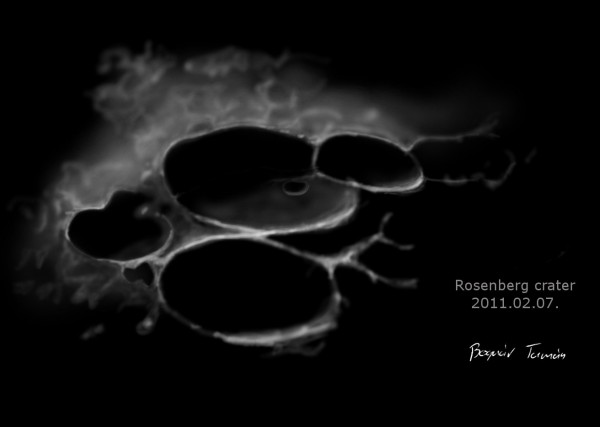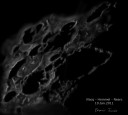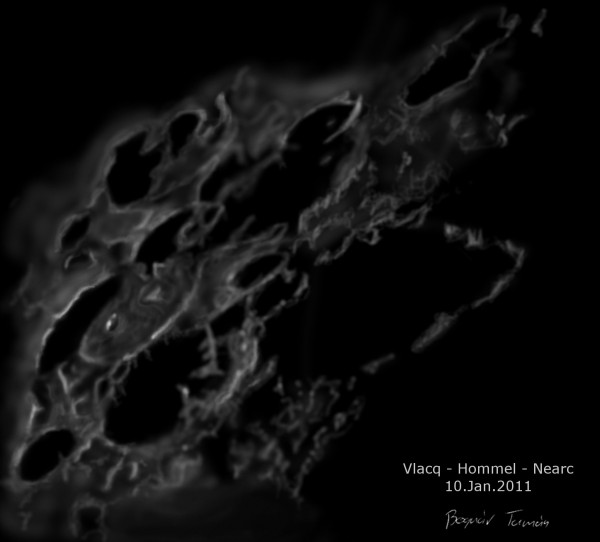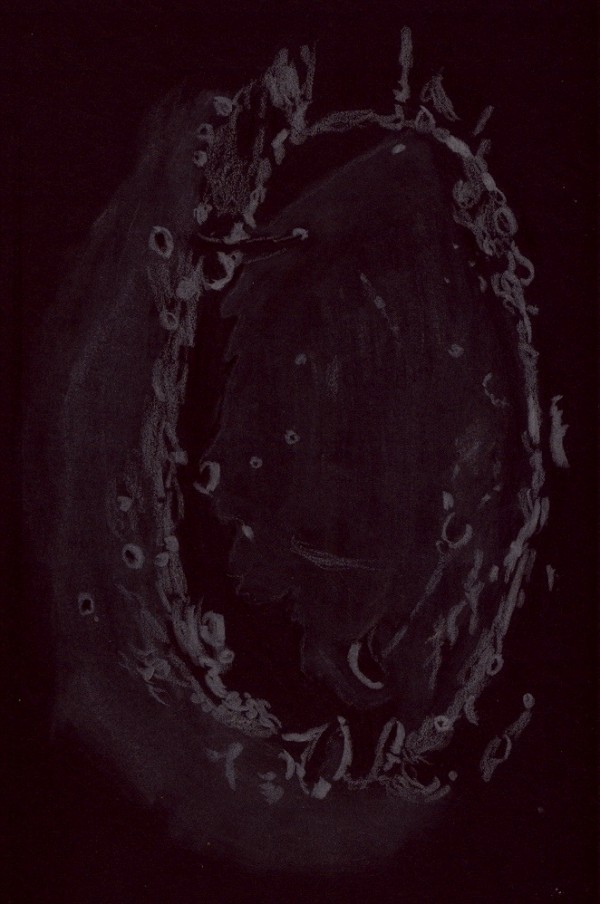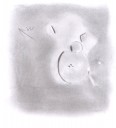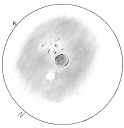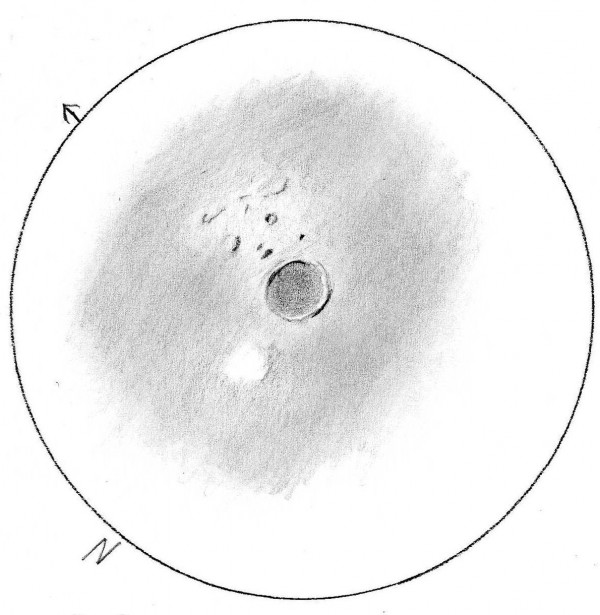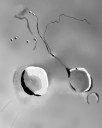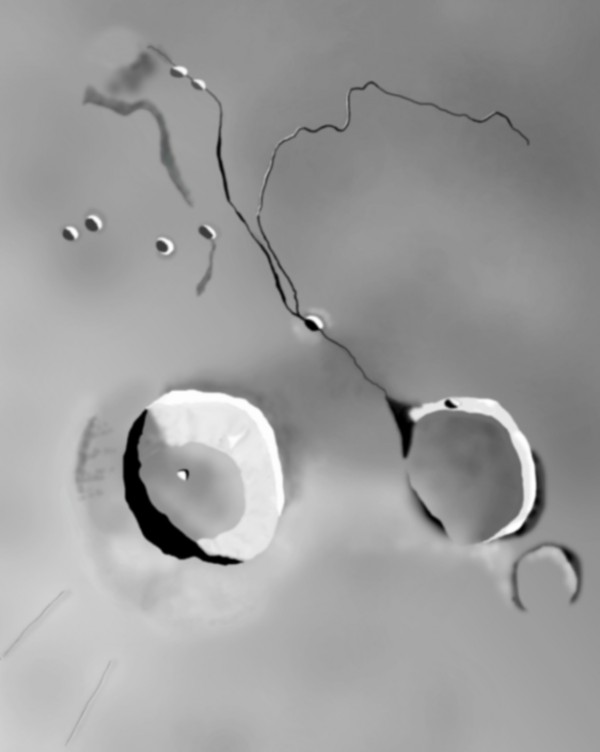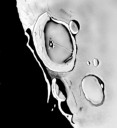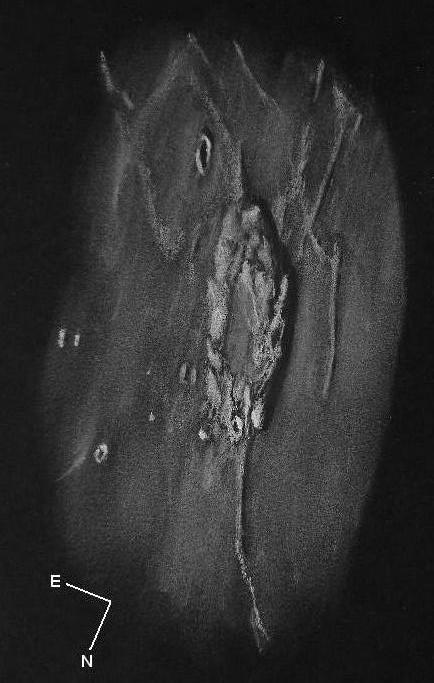
Sketch of Mons Rümker
On this rather fine fall night, with the sunrise shadow moving across Sinus Roris, yet not quite reaching crater Harding, I was able to see and sketch the volcanic mound feature known as Mons Rümker, named after German astronomer Karl L. C. Rümker. This hummocky volcanic multi-domed plateau is raised above the basaltic plain of northwestern Oceanus Procellarum just enough to make it stand out in grazing light.
In the late 19th and on into the 20th century, this feature was believed to be an old collapsed and battered crater. Today it is known to be the frozen remains of a once active cluster of lunar volcanoes arranged in an incomplete circular arching mound. This entire mound measures 70 kilometers across and was observed and sketched while the lighting was good enough to see nice relief from the flat surroundings.
Sketching:
For this sketch I used: 400 series black Strathmore Artagain paper 9″ x 12″, white and black Conte’ pastel pencils, Conte’ crayons, a blending stump, and plastic eraser. Brightness was decreased -1 and contrast increased +1 using my scanner for this sketch
Telescope: 13.1” f/ 6 Dobsonian with 6mm eyepiece (333x) on an equatorial tracking platform
Date: 11-19-2010 06:00 – 07:30 UT
The Moon was nearly 60° above the southern horizon
Temperature: -1°C (30°F)
Weather: mostly clear, calm
Seeing: Antoniadi III
Co longitude: 65.1°
Lunation: 13.1 days
Illumination: 94.1%
Oak Forest, Illinois
Frank McCabe

